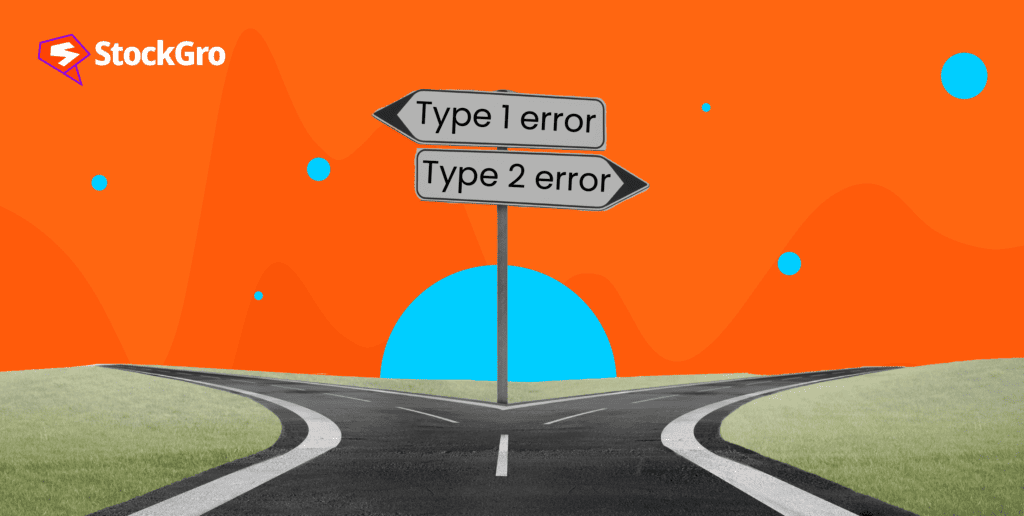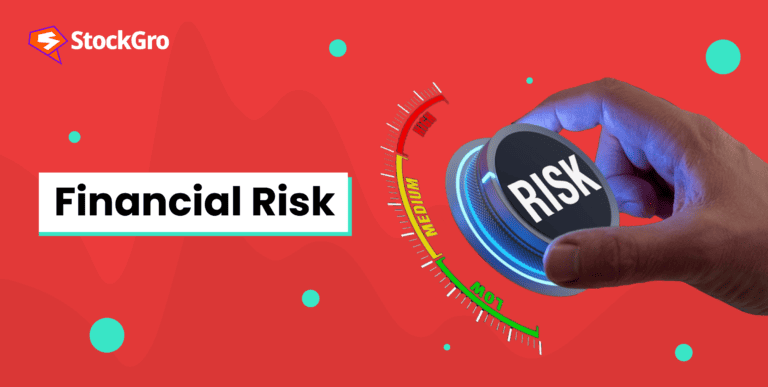
Every day, we make choices by carefully weighing our alternatives and deciding on the best course of action. When the stakes are higher, making the wrong decision may have significant repercussions.
Investing in stocks requires a careful balance between researching and minimising costly blunders. Investors often make two significant mistakes: Type 1 and type 2 errors.
Building a profitable investing portfolio requires an understanding of and the ability to handle these mistakes. Since type 1 and type 2 mistakes may immensely impact your investment results, it’s essential to understand them from the perspective of stock investing. Let’s begin!
Also read: Key risks in investing in the stock market
Understanding type 1 and type 2 errors
False positive, or type 1 error: This error happens when an investor considers a stock or possible investment appealing when in reality it is not. Simply put, you incorrectly perceive something positively. Another name for this is an error of commission.
When an investor makes a type 1 error, they might face the following impacts:
- Depletion of funds
Losses may result from purchasing a stock that is a false positive. These losses may reduce the value of your portfolio and hamper your main investment goals.
- Unrealised potential
You may miss out on possibly more lucrative prospects, which means the resources spent on a false positive may have been used elsewhere.
False negative, or type 2 error: Conversely, a type 2 error occurs when an investor passes on a potentially profitable opportunity to invest because they believe it to be unfavourable. Here, you provide an incorrect negative assessment. This is referred to as an omission error.
Some impacts that an investor may face when making a Type 2 error are:
- Lost profits
You risk missing out on potential profits if you fail to recognise a great investment opportunity. The stock you ignored had the potential to provide significant gains, but you failed to take advantage of it because you perceived it negatively.
- Poorly performing portfolio
If you overlook a lot of false negatives in your portfolio, you may miss out on assets that may increase your profits and experience underperformance.
Also read: Risk management in stock market
Type 1 and Type 2 errors examples
For example, we’ll look at an individual investor who makes a salary and puts money away for retirement.
He plans to save consistently through SIP to build a healthy corpus for his post-retirement life. Since compounding takes many years, time is in his favour. In this case, an error of commission (Type 1 error) will occur if the investor builds an investment portfolio that ultimately proves weak.
On the contrary, it would be an error of omission (Type 2 error) if he failed to capitalise on promising opportunities that may lead to huge payouts.
Difference between type 1 and type 2 error
Below is a table describing what it means to make Type 1 and Type 2 errors as a stock market investor.
| Type 1 Error (False positive) | Type 2 error (False negative) |
| You invest in a stock that you think is good, but it turns out to be bad. | You reject a stock that you think is bad, but it turns out to be good. |
| You lose money and miss out on better opportunities. | You miss out on potential gains and underperform the market. |
| You make an incorrect positive judgement. | You make an incorrect negative judgement. |
| You can reduce this error by being more selective and sceptical about your investment choices. | You can reduce this error by being more open and curious about new investment opportunities. |
Finding the balance
Balancing efforts to minimise type 1 and type 2 errors is crucial. The following methods may help you find the ideal balance:
Calculate your risk tolerance
Identify your level of risk tolerance and adjust your investing strategy properly. You may be able to investigate more options and make fewer type 2 mistakes if you have a higher risk tolerance.
Reviewing your portfolio regularly
Regularly monitor your portfolio to find and rectify any possible type 1 errors. If fundamentals worsen, re-evaluate your investing strategy and exit positions if necessary.
Analysis of risk and reward
Think about the trade-offs between mistakes in type 1 and type 2. Recognise that although taking more significant risks might reduce type 1 mistakes, they can also increase type 2 errors.
Also read: Everything you need to know about stock market portfolios
Conclusion
We should aim for robust options rather than the best ones when making decisions. This is why creating a successful investing portfolio requires finding the balance between eliminating false positives and false negatives.

